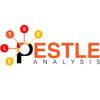Business Intelligence tools aren’t always thought of as part of customer experience armory, but their use can extend to improving your customer service.
Every customer is an individual and has different needs and concerns, but one thing that they all have in common is a high bar for excellence in customer experience (CX). Customer experience needs to be the focal point for any brand, no matter what your vertical or product.
According to one study, 45% of people say they’ll stop buying a specific brand after as little as 2 poor service experiences, and on the flip side, 63% say that the reason they fall in love with a brand isn’t because of its price or its product, but because of its great service.
It isn’t easy to meet these expectations, but the right resources make it possible.
Alongside committed customer service representatives and alignment between all your departments, delivering top CX also requires the business intelligence (BI) tools. BI tools aren’t always thought of as part of your CX armory, but their use and impact can — and should — extend to improving your customer service.
Here are 5 ways that your BI tools can boost CX.
1. A seamless brand conversation
The single biggest frustration for customers is having to explain the same issue repeatedly to different representatives. In contrast, being able to have a single, seamless conversation across all channels is the main requirement for CX to be considered “exceptional.”
But enabling one uninterrupted conversation requires every customer representative on every channel to be able to view customer data in real time, checking not just the ticket that the customer opened 3 days ago, but also their replies to questions asked by a customer support agent 5 minutes ago.
BI tools help open up access to these insights, with easy to use interfaces allowing even non-techie employees to view data for themselves, without help from a data scientist. By connecting to a central data lake, analytics engines can draw on real time data from across the organization, removing any silos to a seamless conversation. And storing data in a data lake vs. delta lake means that the data is accessible to every analytics tool, without any restrictions on your choices.
2. Relevant product offerings
Market trends, product preferences, and customer interests can change in the blink of an eye, but customers expect you to always know their current tastes. 81% say that they appreciate receiving proactive suggestions when they’re shopping online, for example, but only when those suggestions are relevant.
It’s just as frustrating for shoppers to find that the product they want is out of stock, or that your store didn’t get ahead of the latest big trend and they have to go elsewhere to complete their purchases.
This makes it crucial to use fast BI analytics that can swiftly gather data, clean and verify it, and crunch it into actionable insights that enable you to keep your product offerings and personalized recommendations up to date. Data lakes ensure that datasets are ready to use asap, while adding scalability so that every department can tap into data without fearing the system will reach its limits (or send you an enormous bill).
3. Strong data privacy protections
Data privacy is a real concern today, with 87% of consumers saying that they wouldn’t purchase from a company if they’re worried about their data protection. Even more will refuse to share data with a company that’s lacking in data security, and at a time when data is the new oil, that threat is serious.
Selecting BI tools with care can help you reassure customers that their data is safe in your hands. Look for analytics engines that have security protection baked in, and data repositories that anonymize data so that customer identities are kept confidential without handicapping your understanding of their needs.
4. Personalized interactions
Personalized marketing, sales, and experiences have all become the norm today. Customers don’t consider it to be a high bar to demand that brands address them by name, know their preferred channels, and offer only relevant discounts, and they are unlikely to give any attention to non-personalized interactions.
Without automated data processing, there’s no way that any brand can keep up enough to ensure relevant messaging, let alone customized products or dynamic web content. This requires tools that can integrate data from all over the organization, break down silos between data sources, and generate insights swiftly, while being easily accessible to all employees in real time.
5. Fast responses
Customer patience has been drying up for a while now, but COVID-19 made it worse. After several months at home interacting with self-serve portals, chatbots, and business apps that deliver instant satisfaction, customers aren’t willing to wait for their issues to be resolved.
That’s why you need data analytics tools which work fast to crunch data and generate answers, whether it’s to update personalized product recommendations or serve your customer support representatives with information about the customer they are talking with right now.
Customers appreciate your BI tools too
With the help of the right BI tools, including easy-to-use interfaces, powerful analytics engines, and fast data storage solutions, organizations can boost the CX they offer without hassle. Improving your product offerings, strengthening data privacy, enabling a seamless brand experience, speeding up your response time, and hyper personalizing your interactions are all key elements in top CX, and rest on a solid BI foundation.


